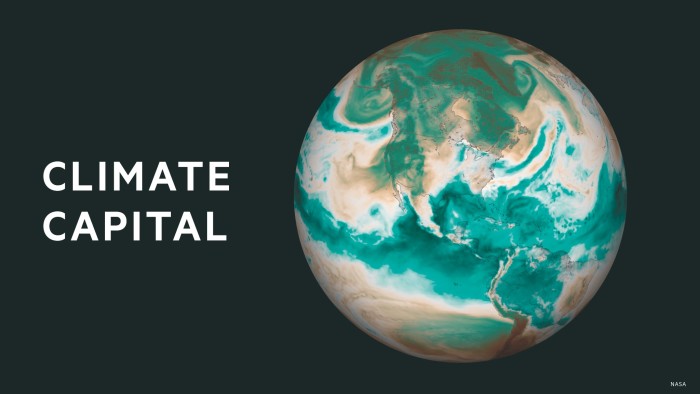Scientists said “heat domes” and related atmospheric events behind extreme weather around the world had almost tripled in strength and duration since the 1950s, as tens of millions of people sweltered in “dangerous heat” in parts of the US and Europe.
Countries including Greece, Spain and France faced unusual June heatwaves due to a heat dome — a phenomenon that occurs when a high-pressure system traps heat — having formed over part of Europe.
The UK Met Office said June was the hottest on record for England and the second hottest for the UK since 1884, according to provisional data. Peak temperatures of up to 35C in London were forecast on Tuesday.
“This, in part, will be influenced by a heatwave developing across western Europe,” said Mike Silverstone, deputy chief meteorologist at the Met Office.
The Met Office said overnight temperatures would remain high, with some locations “not dropping below 20C in what is called a tropical night”.
The warm nights meant that there was little recovery from the hot days. However, showers forecast for late Tuesday and early Wednesday meant daytime temperatures were expected to return closer to the seasonal average of around 26C in London by the end of the week.
University of Reading professor in climate science Richard Allan noted that ocean temperatures were also up to 2C above average across the waters to the south-west of the UK and hotter still in the western Mediterranean.
“Rising greenhouse gas levels due to human activities are making it more difficult for Earth to lose excess heat to space and the warmer, thirstier atmosphere is more effective at drying soils, meaning heatwaves are intensifying, with moderate heat events now becoming extreme,” Allan said.
Météo France put 84 departments into orange alert on Monday with several in red alert for Tuesday, a situation considered “unprecedented” by the authorities, the European earth observation agency Copernicus noted.
France and the Benelux region were seeing the largest deviations from the average for the time of the year with 10C to 14C above the historical climate, according to ECMWF data, confirmed by Météo France.
Temperatures also passed 40C in parts of the US in the past week as a heat dome took hold across eastern and central states. In Manhattan, temperatures hit 99F (37C) and John F Kennedy airport reached 102F (38.9C).
At the same time, persistent low pressure systems saw China’s south-west hit by flooding last week, causing deaths and the evacuation of thousands, with warnings from the China Meteorological Administration issued about extreme rainfall in parts of Guizhou, Yunnan and Sichuan. Pakistan and north India also recorded fatalities from flash flooding.
“Dual heat domes” in both Europe and North America were likely to “become more common as we continue to heat the planet”, said Michael Mann, professor at the Department of Earth and Environmental Science at the University of Pennsylvania.
Research by Mann and colleagues, published in the journal Proceedings of the National Academy of Sciences, found that the amplification of waves in the jet stream — the fast-moving band of air encircling the planet — had led to a dramatic increase in atmospheric events, driving heatwaves, wildfires and floods.
The phenomenon, known as quasi-resonant amplification, causes low- and high-pressure weather systems to linger over a region for longer periods.
The study of the jet stream behaviour calculated the number of quasi-resonant amplification episodes within each year.
Using seven decades of data, a trend emerged in the annual count of events during the summer in the boreal region, or the northern climatic zone south of the Arctic, where the jet stream encircles the globe.
This corresponded to roughly a tripling from approximately one event per year to about three when calculated over the past 70 years.
The present “dual heat domes show that this was part of a very large-scale pattern”, which was linked to a “very wiggly jet stream where the ‘wiggles’ stay in place for days on end”, Mann said.

Existing climate models were “not entirely capturing the phenomenon and how it is impacted by human-caused warming”, he added.
Amanda Maycock, University of Leeds professor of climate dynamics, said the weather considered “typical” for summer was a concept of the past, as changes in weather patterns and the jet stream contributed to regular extremes of temperature and rainfall.
While the reasons for the change in atmospheric patterns were not fully understood, it was certain the continued rise in greenhouse gases would intensify heatwaves, she added.
“We now expect that temperature records will be regularly broken, not by a small amount but often by large margins,” Maycock said. “We must remind ourselves this is not normal. Climate change is standing before our eyes.”
Climate Capital

Where climate change meets business, markets and politics. Explore the FT’s coverage here.
Are you curious about the FT’s environmental sustainability commitments? Find out more about our science-based targets here

